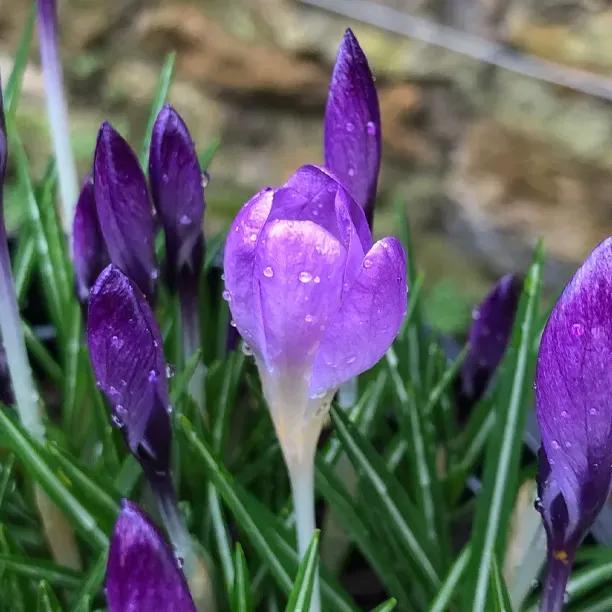Tommasini's Early Crocus Bulbs
Honest Delivery Prices- Height: 10 cm
- Colour: Lilac
- Scent: none
- Flowering: February - March
- Size: 5 cm
- Planting depth: 10-15 cm
- Foliage: linear with silver, central stripe
- RHS Award of Garden Merit
Recommended extras
Description
Crocus tommasinianus
The Early or Snow Crocus is more slender and delicate but just as colourful as the more common Dutch Crocuses. Awarded an AGM by the RHS this crocus rewards you by being up and about before the rest of its family have stirred. Its translucent sapphire-lavender shade of colour is irresistible and contrasts well with its gorgeous golden stamens. When in full bloom it opens out to look almost star-like. Down the middle of each leaf there is a silver line and at the top, a characteristic tuft. On a practical level, perhaps the best thing about this particular crocus is that it naturalises easily so that you soon achieve a veritable carpet of blue early on in the year. Technically a corm, Crocus tommasinianus flourishes in any ground except a bog, almost preferring a relatively poor soil, making it extremely versatile. If you want larger flowers, later in the year, or different coloured crocus flowers then have a look at the rest of the crocuses we have available.
Where in the Garden - Crocus Tommasinianus
Crocus Tommasinianus looks best when planted in a fairly random fashion; no straight lines, please. Because the flowers are not especially tall they work best in a mown lawn but be prepared to let the foliage die down after they have flowered before you mow again. If you are thinking in terms of blue, then wind anemones (Anemone blanda) make a great follow-on plant and of course there are various other coloured crocuses that will come up and keep them company. The white Crocus Vernus 'Joan of Arc' springs to mind because it is about the same size as the Tommie or for more bang for your buck, the acid yellow of winter aconite, Eranthis hyemalis can look stunning.
You might also think of growing crocuses in pots, especially tazza pots. Layer the corms in the pot along with later flowering bulbs such as daffodils and tulips so that you have a continuing display of colour from late winter right through to the summer. If you want to extend the crocus season, you can buy Crocus sativus, the Autumn crocus and even harvest some of your very own saffron.
Features
- Colour: Blue
- Height: 4 ins (10 cm)
- Scent: None
- Flowering: February-March
- Bulb Size: 5 cm
- Planting Depth: 10-15 cm
- Planting Months: September - late November
- RHS Award of Garden Merit
Bits and bobs
This crocus was named in honour of Muzio von Tommasini, an amateur botanist and career politician who later became Mayor of Trieste, that fabulous Hapsburg port. You might find it growing wild in Hungary or Bulgaria, although the first crocus bulbs were brought from Constantinople to the Netherlands in 1560. It might have been about then that in Germany it became known as the Elfenkrokus, or Elf Crocus.
Our Potted Bulbs A 1 litre pot contains approximately:- 10 small bulbs: anemones, crocus, dwarf daffodils, iris reticulata etc or
- 5 large bulbs: hyacinths, daffodils, tulips



 Img 2.webp)
 Img 3.webp)
 Img 4.webp)
